To install a padlock on a door, first, select a suitable location and mark it. Then, drill holes based on the lock’s instructions and attach the lock to the door.
Tools And Materials You’Ll Need
When it comes to installing a padlock on a door, there are a few essential tools and materials you’ll need to ensure a successful installation. Choosing the right padlock will ensure security and durability, while gathering the necessary equipment will make the installation process smoother. Preparing the door for installation is also crucial to ensure a proper fit and functionality. In this section, we will dive into each of these steps in detail, providing you with everything you need to know to install a padlock on a door.
Choosing the right padlock
Before you begin installing a padlock on your door, it’s important to select the right one that meets your specific needs in terms of security and functionality. Here are a few factors to consider when choosing a padlock:
- Security level: Determine the level of security you require, whether it’s for an outdoor gate or an indoor cabinet.
- Material: Look for padlocks made from durable materials such as hardened steel or solid brass.
- Size: Ensure that the padlock fits the hasp or shackle of your door, allowing for easy operation.
- Keyed or combination: Decide whether you prefer a padlock that requires a key or one with a combination lock.
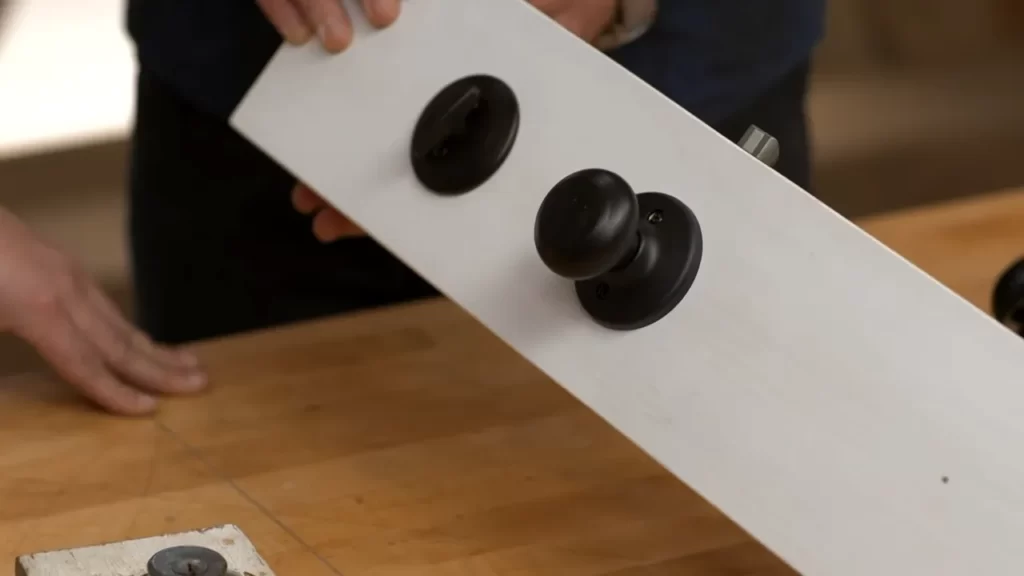
Gathering the necessary equipment
Once you’ve chosen the appropriate padlock, the next step is to gather the necessary tools and materials that will facilitate the installation process. Here’s a list of the equipment you’ll need:
| Tools | Materials |
|---|---|
| Screwdriver | Padlock with keys or combination |
| Drill | Mounting screws |
| Drill bits | Backplate or hasp |
| Measuring tape | Lubricant |
| Pencil |
Preparing the door for installation
Before you can install a padlock on your door, it’s essential to prepare the door for the installation process. Follow these steps to ensure a proper fit and functionality:
- Identify the ideal location: Determine the optimal position for your padlock, taking into account ease of access and visibility.
- Measure and mark: Use a measuring tape to mark the spots where the backplate or hasp will be installed.
- Drill pilot holes: Use a drill and appropriate drill bit to create pilot holes for the mounting screws.
- Install the backplate or hasp: Attach the backplate or hasp to the door using the provided mounting screws.
- Test the fit: Check that the padlock aligns with the backplate or shackle and operates smoothly.
- Apply lubricant: If necessary, apply a small amount of lubricant to the moving parts of the padlock for optimal performance.
By following these steps, you’ll be well on your way to installing a padlock on your door. Next, we’ll move on to the final section, where we will discuss some tips and tricks for maintaining and troubleshooting your padlock.
Step-By-Step Guide To Installing A Padlock
Padlocks are a simple and effective way to secure your doors, whether it’s on a gate, shed, or even your front door. Installing a padlock might seem like a daunting task, but with the right tools and a little bit of guidance, you can do it yourself. In this step-by-step guide, we’ll walk you through the process of installing a padlock on a door, from measuring and marking the location to attaching the padlock. Let’s get started!
Measuring and marking the location
The first step in installing a padlock on a door is to measure and mark the location. Start by identifying the area on the door where you want to install the padlock. Ensure that it is a sturdy and secure spot that will hold the weight of the padlock. Once you’ve found the perfect spot, measure the width and height of the padlock to determine the size of the hole you’ll need to drill.
Using a pencil or marker, mark the center of the spot where you want to install the padlock. This will serve as your drilling guide later on. Double-check your measurements to ensure accuracy, as any slight errors could affect the functionality of the padlock.
Drilling the necessary holes
Once you’ve marked the location for the padlock, it’s time to drill the necessary holes. It’s a good idea to use a drill bit that matches the size of the padlock’s shackle for the best fit. Start by securing the door in a stable position, either by holding it in place or using clamps to keep it steady.
Using the center mark you made earlier as a guide, carefully drill a hole through the door. Take your time and make sure you apply steady pressure to avoid splintering the wood or damaging the door material. If you’re unsure about the drilling process, consider seeking professional help to ensure a clean and accurate hole.
After drilling the hole, check the fit of the padlock’s shackle. It should slide in smoothly without any resistance. If the hole is too small, use a slightly larger drill bit to widen it. If it’s too large, you may need to use a sleeve or adaptor to secure the padlock tightly.
Installing the strike plate and latch
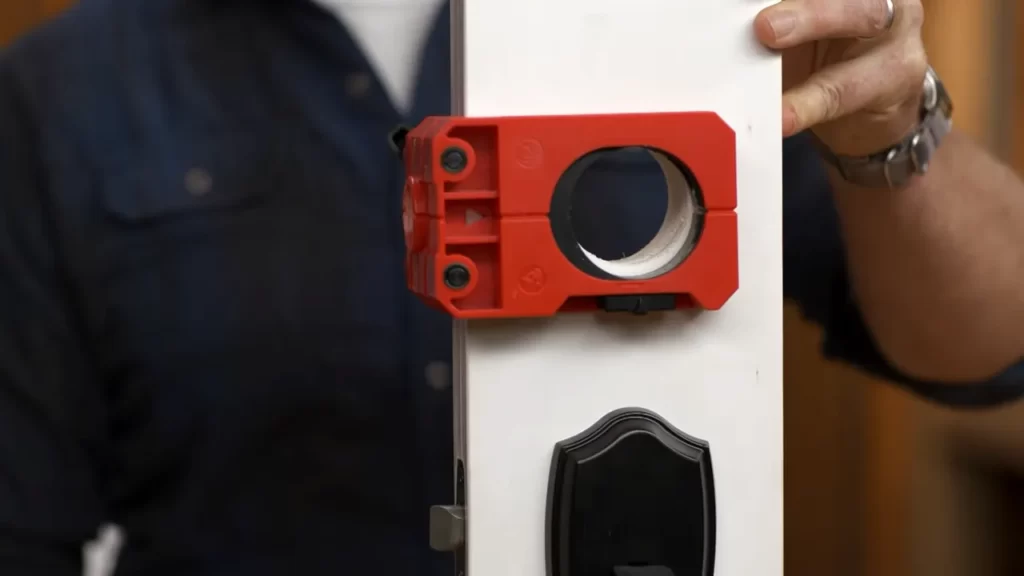
With the hole drilled, it’s time to install the strike plate and latch. The strike plate is the metal piece that attaches to the door frame and holds the padlock in place. Secure the strike plate onto the door frame using screws or bolts provided with the padlock.
Next, insert the latch into the hole you drilled, making sure it fits snugly. Attach the strike plate to the latch to complete the installation. Ensure that the latch moves freely and securely engages with the padlock when closed.
Attaching the padlock
The final step is attaching the padlock to the strike plate and latch. Open the padlock and loop the shackle through the strike plate, making sure it sits flush against the door surface. Then, close the padlock and check that it locks securely in place. Test the padlock by applying gentle force to ensure it withstands pressure.
And there you have it! You’ve successfully installed a padlock on a door using our step-by-step guide. Remember to keep your padlock keys in a secure place and periodically check the lock for any signs of wear and tear. With proper installation and regular maintenance, your padlock will provide you with the peace of mind and security you need. Happy DIY-ing!
Adjusting The Padlock
Adjusting the padlock properly is essential to ensure that it provides maximum security for your door. Here are a few steps to follow to ensure a correct fit and functionality:
Ensuring the correct fit
Before installing your padlock, it’s crucial to ensure that it fits properly on your door. Follow these steps for a correct fit:
- Measure the shackle diameter: Using a ruler or measuring tape, determine the diameter of the padlock’s shackle. This measurement will help you choose a padlock that fits snugly on your door.
- Check the door’s dimensions: Measure the width and thickness of your door to ensure compatibility with the padlock. Refer to the padlock’s specifications to find the recommended door dimensions.
- Select the right size: Based on the measurements, choose a padlock that matches the shackle diameter and fits your door’s dimensions. Remember, a loose or tight fit can compromise the padlock’s effectiveness.
Testing the lock’s functionality
Once you’ve installed the padlock, it’s essential to test its functionality to ensure proper operation. Here’s how:
- Check for smooth operation: Ensure that the padlock’s key or combination mechanism works smoothly without any jerks or resistance. This ensures ease of use and avoids any potential lock jams.
- Test the latch: Close and open the door multiple times to ensure that the padlock latches properly. The latch should securely hold the door together, preventing any unauthorized access.
- Examine security features: Carefully inspect the padlock’s body and shackle for any signs of tampering or damage. Ensure that the shackle is solidly secured to the body and cannot be easily manipulated.
- Verify key retention: If your padlock uses a key, test if it retains the key properly when the lock is open. This prevents accidentally leaving the key behind, compromising security.
Additional Security Measures
When it comes to protecting your home or business, installing a padlock on your door is a great first step. However, there are additional security measures you can take to reinforce your door and further enhance its resistance to forced entry. In this section, we will discuss three crucial steps you can follow to ensure maximum security for your door.
Reinforcing the door frame
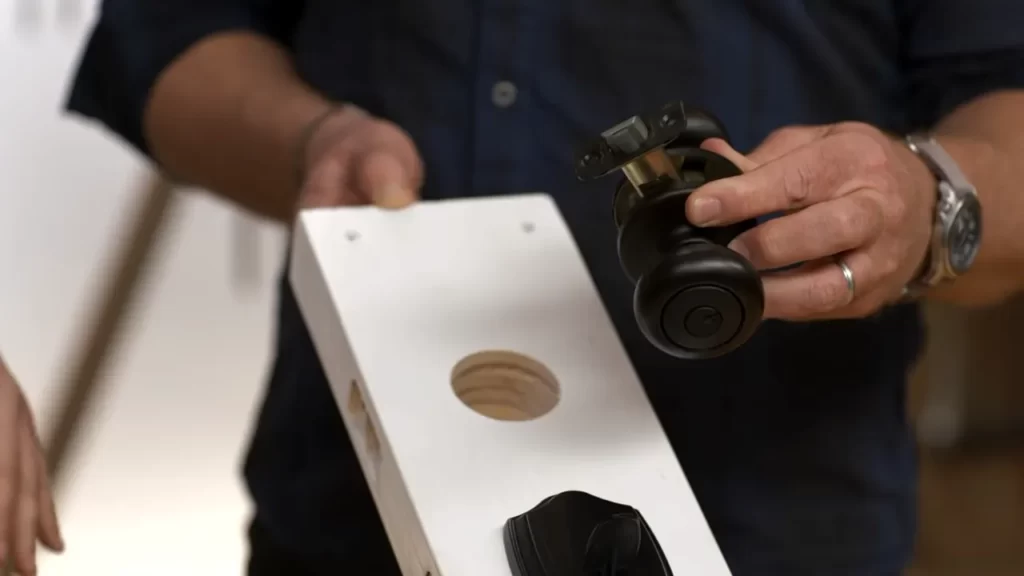
One of the weak points of a door is often the frame. To strengthen it, you can reinforce the door frame by adding steel plates. These plates act as a barrier against any attempt to kick the door in. Installing steel plates is a simple process that can provide immense security benefits. Here’s how you can do it:
- Measure the width and height of the door frame.
- Purchase steel plates that match the dimensions of your door frame.
- Using a power drill, pre-drill holes in the steel plates to align with the existing holes in the frame.
- Secure the steel plates to the door frame using screws or bolts.
By reinforcing the door frame with steel plates, you create a solid barrier that significantly reduces the risk of forced entry.
Installing a door jamb
To further enhance the security of your door, consider installing a door jamb. A door jamb is a vertical metal plate that reinforces the locking area of the door. It provides additional strength and stability to the lock, making it more resistant to break-ins. Follow these steps to install a door jamb:
- Remove the existing strike plate from the door frame.
- Position the door jamb over the existing hole and align it with the latch hole.
- Mark the screw holes on the door jamb with a pencil.
- Pre-drill holes in the door jamb for the screws.
- Screw the door jamb into place using the marked holes.
By installing a door jamb, you add an extra layer of protection to your door, making it more challenging for intruders to force their way in.
Adding security accessories
In addition to reinforcing the door frame and installing a door jamb, you can further enhance the security of your door by adding security accessories. These accessories include:
- Anchoring plates: These plates attach the door to the frame, making it harder to pry open.
- Door chains: Door chains allow you to partially open the door while keeping it secure.
- Security bars: These bars prevent the door from being kicked in by providing an additional layer of resistance.
By incorporating these security accessories, you create multiple layers of protection that significantly increase the security of your door.
With these additional security measures in place, you can feel confident that your door is well-equipped to deter potential intruders and keep your property safe and secure.
Troubleshooting Common Issues
While installing a padlock on your door can provide an extra layer of security, it’s not uncommon to encounter a few hiccups along the way. Fortunately, many of these issues can be easily resolved with a little troubleshooting. In this section, we’ll discuss some common problems you may encounter when installing a padlock on a door and provide practical solutions to help you overcome them.
Padlock not fitting properly
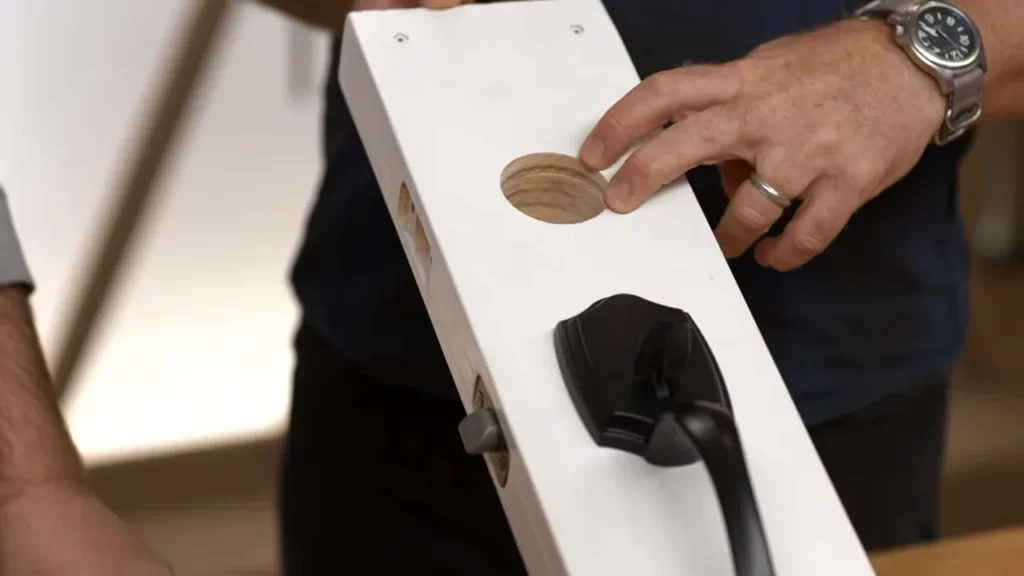
One of the most common issues you may face is a padlock that doesn’t fit properly on your door. This can be frustrating, but before you give up and try a different lock, there are a few things you can try:
- Measure the size of the padlock shackle and compare it with the diameter of the hole in the door hasp. Make sure the padlock you’re using is the correct size for the door.
- Inspect the door hasp for any obstructions or debris that may be preventing the padlock from fitting. Remove any dirt or debris using a soft brush or cloth.
- If the door hasp is misaligned, you may need to adjust it to ensure the padlock fits properly. Use a screwdriver to loosen the screws holding the hasp in place, then reposition it and tighten the screws again.
- If the padlock still doesn’t fit, you may need to consider replacing the door hasp with a larger one that can accommodate your padlock. Consult a professional locksmith for assistance if necessary.
Lock mechanism not working smoothly
Another common issue you may encounter is a lock mechanism that doesn’t work smoothly. This can make it difficult to lock or unlock the padlock, compromising its effectiveness. Here are some troubleshooting steps to try:
- Apply a small amount of lubricant, such as graphite powder or silicone spray, to the keyhole and the moving parts of the lock mechanism. This can help alleviate any friction or sticking that may be causing the issue.
- If the lock mechanism is rusty or damaged, you may need to replace it with a new one. Look for a compatible lock mechanism that matches your padlock and follow the manufacturer’s instructions for installation.
Padlock getting stuck or jammed
Dealing with a padlock that gets stuck or jammed can be frustrating, especially when you’re in a hurry. Here’s what you can do to resolve this issue:
- First, try gently jiggling the key while turning it in the lock. Sometimes, the pins or tumblers inside the lock may get misaligned, causing the padlock to jam. The slight movement can help realign the internal components and free the lock.
- If jiggling the key doesn’t work, do not force the padlock open, as this could cause further damage. Instead, apply a lubricant specifically designed for locks to the keyhole and wait a few minutes before attempting to open the padlock again.
- If the padlock is still stuck, you may need to seek professional help from a locksmith who can carefully disassemble the lock and resolve the issue. Attempting to force open a stubborn padlock can lead to irreversible damage and rendering it useless.
By implementing these troubleshooting tips, you can address common issues that may arise when installing a padlock on a door. Remember, when in doubt, it’s always best to consult a professional locksmith who can provide expert advice and guidance.
Expert Tips For Padlock Installation
When it comes to securing your door, installing a padlock is an effective solution. However, it’s essential to install it correctly to ensure maximum security. In this section, we will share expert tips for padlock installation, covering choosing the right size padlock, maintaining the lock for longevity, and seeking professional assistance if needed.
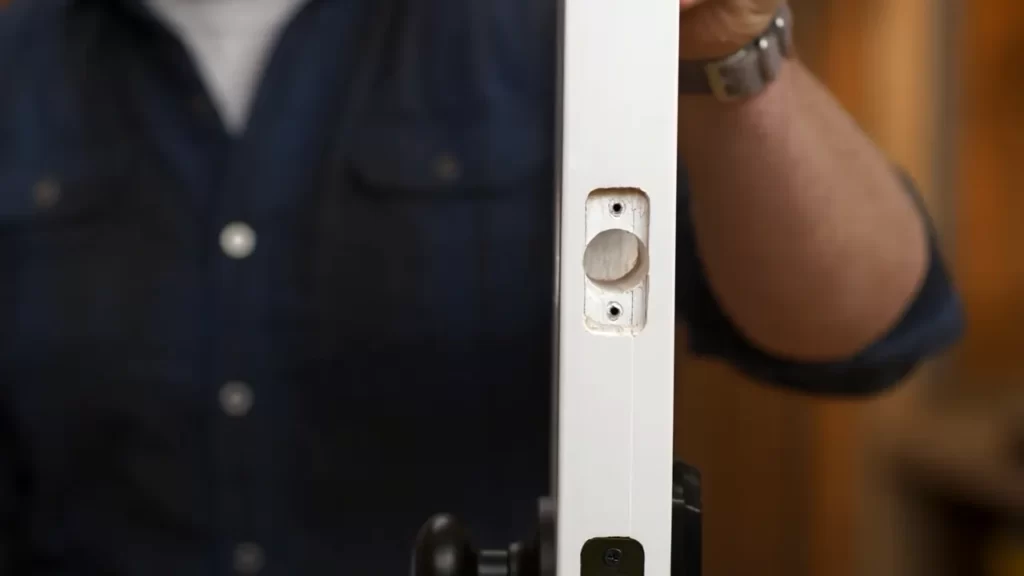
Choosing the right size padlock
One of the most crucial aspects of padlock installation is selecting the correct size. An ill-fitted padlock may compromise security, rendering it ineffective. To choose the right size padlock for your door, you need to measure the diameter of the hasp or shackle opening. Measure the width and height of the opening, and ensure that the padlock’s shackle diameter matches or slightly exceeds the opening size.
Additionally, consider the clearance required for the lock to operate smoothly. If the padlock is too large, it may not fit properly, while a small padlock might not provide sufficient strength to withstand forced entry attempts. Take these measurements into account when selecting the ideal size for optimal security.
Maintaining the lock for longevity
Proper maintenance of your padlock is essential to ensure its longevity and functionality. Regularly inspect the lock for any signs of damage, such as rust or worn-out components. Clean the lock with a mild household cleaner or lubricant to remove dirt and debris that can hinder its operation.
Remember to lubricate the lock regularly with a high-quality oil or graphite-based solution. Lubrication helps prevent rust and ensures smooth movement of the internal components. However, avoid using excessive oil or other substances, as they may attract dirt and dust, potentially jamming the lock.
Seeking professional assistance if needed
If you encounter any difficulties during the padlock installation process or are unsure about the specific requirements of your door, it is always advisable to seek professional assistance. Experienced locksmiths have the knowledge and expertise to guide you in selecting the right type and size of padlock, as well as ensuring proper installation.
Professional locksmiths can also offer additional security recommendations tailored to your unique needs. Remember, investing in professional assistance will not only save you time and effort but also ensure that your padlock provides the highest level of security for your door.
Frequently Asked Questions Of How To Install A Padlock On A Door
How Do You Put A Lock On A Door?
To put a lock on a door, follow these steps: 1. Choose the right lock type for your door. 2. Measure and mark the correct height and position for the lock. 3. Drill holes for the lock cylinder and latch plate.
4. Install the lock components and tighten screws. 5. Test the lock to ensure it is working properly.
How Do You Install A Hinge Hasp On A Door?
To install a hinge hasp on a door, follow these steps: First, align the hasp with the door and mark the screw holes. Then, drill pilot holes for the screws. Next, attach the hasp using the screws provided. Finally, test the hasp by opening and closing the door to ensure proper functioning.
Does The Hasp Or The Staple Go On The Door?
The hasp goes on the door.
What Is A Padlock Hasp?
A padlock hasp is a metal piece used with a padlock to secure doors or containers. It has a loop for the padlock’s shackle to go through, providing added protection against unauthorized access.
Conclusion
To confidently secure your door, follow these simple steps to install a padlock. Ensure maximum protection by choosing a strong padlock, assessing the correct location, and taking necessary precautions. Remember, a properly installed padlock not only enhances your security but also provides peace of mind.
Implement these techniques and fortify your door against potential threats. Your safety is worth the effort!
